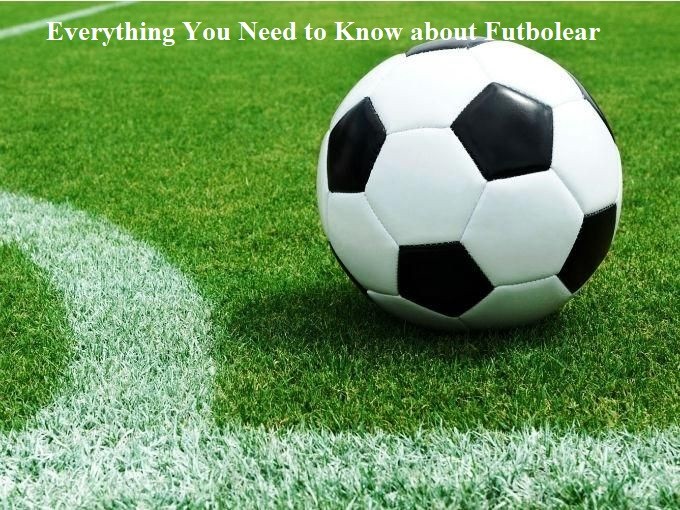Futbolear, alternatively recognized as footvolley or soccer volleyball, has emerged as a globally popular and dynamic sport. This engaging activity seamlessly merges the skills and techniques of soccer with the strategic elements and agile movements of volleyball, resulting in a thrilling and demanding game. If you wish to know more about this sport, then you should go through this article in detail.
In this article, we’ll dive deep into the rules of Futbolear and share some valuable tips and tricks to enhance your skills. Whether you’re a beginner or a seasoned player, we’ve got you covered with essential soccer drills and impressive soccer tricks to take your game to the next level.
A Doze Of History Futbolear
Futbolear, or indoor soccer, originated in 1930s South America as a solution for playing soccer during the rainy season. In Montevideo, Uruguay, Juan Carlos Ceriani and friends played the first game in a YMCA gym. José Antonio Casanova formalized rules in 1950, including 5 players per side, a basketball court-sized field, unlimited substitutions, and 20-30 minute halves. The sport gained popularity in South America and expanded to Europe in the 1960s, introduced by Spanish journalist Juan Carlos Carnicer after witnessing a match in Uruguay.
Essential Regulations
We know that this is a dynamic sport that blends traditional soccer with the challenges of playing on sand. To ensure fairness and safety, specific rules govern the game:
Field and Equipment:
The field is smaller, approximately 30-40 meters long and 20-30 meters wide, with goal posts measuring 2 meters in height and 5 meters in width. A specially designed ball, slightly smaller than a regular soccer ball, is used.
Number of Players:
Each team has five players, including one goalkeeper. Up to three substitutes can be interchanged during any stoppage in play.
Game Duration:
A Futbolear match comprises three 12-minute periods, with a two-minute break between each. Overtime or penalty shootouts may occur if teams are tied after three periods.
Kickoff and Restarts:
The game begins with a kickoff from the centre mark at the start of each period or after a goal. Other restarts during play follow specific rules.
The Way To Play
Futbolear accommodates 2-6 players divided into two teams with the objective of scoring points by throwing or kicking a ball into the opponent’s goal while adhering to basic rules.
Field Setup:
Begin by setting up the field on any flat surface, using cones or ropes to outline the boundaries. The field size, typically around 20×40 feet, can be adjusted based on the number of players.
Equipment:
Futbolear requires a standard-sized soccer ball, though players may opt for a smaller or lighter ball. Comfortable shoes are recommended due to constant movement.
Starting Play:
To determine initial ball possession, both teams engage in a “penalty shootout.” Players take turns attempting to score against the opponent’s goalie without dribbling or crossing a designated line on either side of the field.
Gameplay:
Once possession is established, gameplay unfolds as each team strives to score points by throwing or kicking the ball into the opponent’s goal while adhering to the game’s rules.
Equipment Needed
Football:
Essential for futbolear, choose a size 3 or 4 football for better handling and control, especially during advanced tricks.
Footwear:
Opt for flat shoes or sneakers with minimal tread for improved grip during the footwork and balance required.
Shin Guards:
Protect your shins during moves and tricks with shin guards, a crucial item for futbolear practitioners.
Sports Tape:
Prevent blisters during intense practice sessions with sports tape, an important addition to your futbolear gear.
In Comparison To Other Sports
It is a burgeoning sport that melds elements of soccer and tennis. Its rising popularity has piqued curiosity about its distinctions from established sports like soccer and tennis. Here are the key differences:
Equipment:
Futbolear employs a unique ball, slightly smaller than a soccer ball but larger than a tennis ball, and a net akin to a tennis net but smaller. In contrast, soccer and tennis use distinct balls and nets.
Number of Players:
Soccer typically features 11 players per side, while tennis is often one-on-one or two-on-two. Futbolear opts for three players per side – two field players and one goalkeeper.
Physical Demands:
The sports vary in intensity. Soccer demands endurance with continuous movement on a larger field. Tennis involves quick sprints and directional changes on a smaller court. Futbolear’s playing area falls in between, striking a balance.
Why Is It Beneficial?
Improves Physical Fitness:
Futbolear’s compact court necessitates constant movement, fostering quick reflexes and agility. This boosts cardiovascular endurance and overall stamina. The use of a heavier ball in futbolear also enhances players’ strength during dribbling and shooting compared to regular soccer.
Enhances Technical Skills:
On a smaller, hard surface with 5 vs 5 teams, futbolear offers more ball touches per player than traditional soccer. This heightened involvement accelerates improvement in ball control, passing accuracy, and shooting precision. The limited court space demands quicker decision-making and precise execution.
Develops Teamwork and Communication:
Futbolear’s teamwork emphasis is vital, with each player playing a crucial role in attacking or defending. The sport encourages effective communication and coordination for creating opportunities and thwarting opponents.





































































